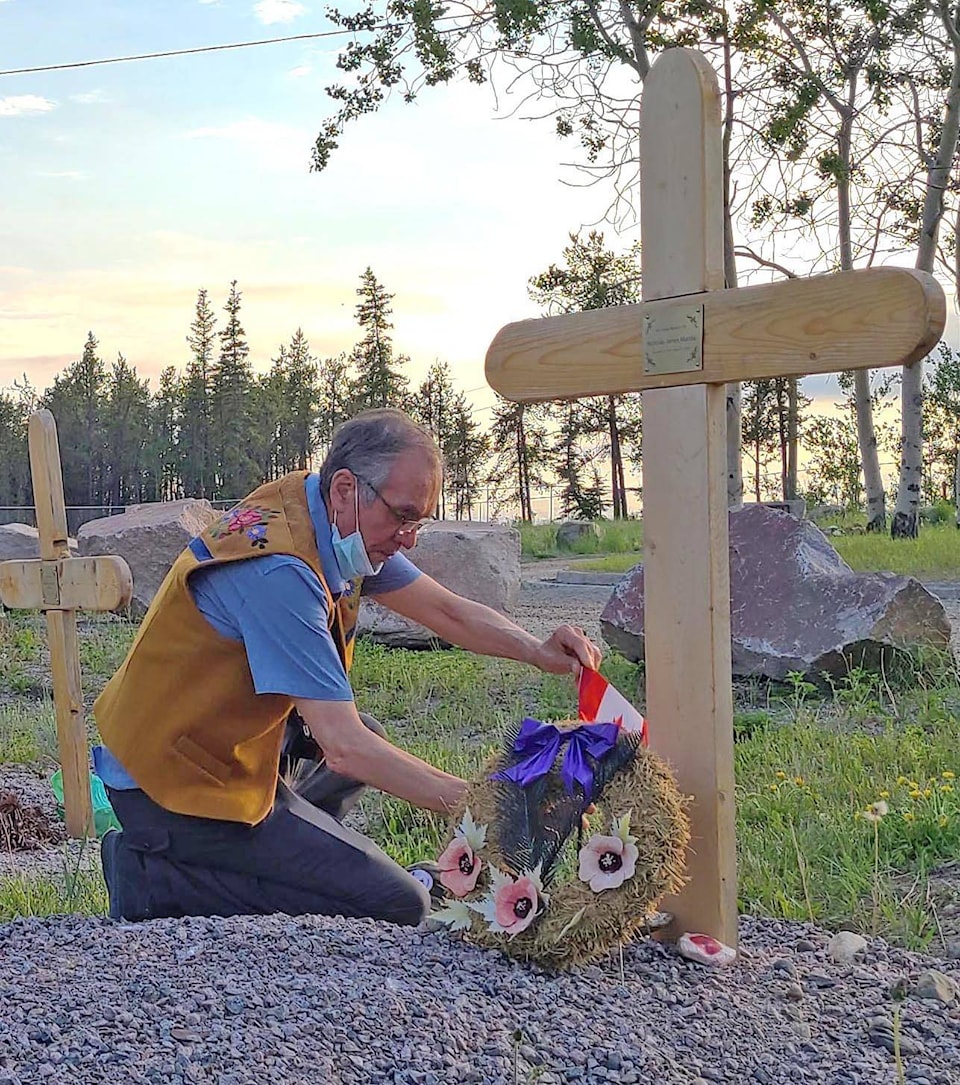Fistbumps and kudos to the historians whose work made it possible to mark the final resting places of fallen soldiers with the tribute they deserve.
In last week’s News/North we reported that thanks to the work and funding from the Last Post Fund, Indigenous veterans who were buried in the territory are now memorialized for their service with proper headstones to acknowledge their contributions to the country.
Dene National Chief Norman Yakeleya headed a ceremony on July 12 that saw the unveiling of gravestones for Indigenous veterans. Now, anyone walking by will know that this person sacrificed everything for Canada.
The department of national defense estimates as many as 12,000 First Nations, Metis and Inuit people have served in Canada’s overseas conflicts and peacekeeping missions over the past hundred years. At least 500 of them made the ultimate sacrifice.
Canadians made a name for themselves as scrappy and effective allies in world wars and Indigenous peoples were no exception to excellence.
During the Second World War, for example, Indigenous peoples volunteered for overseas service with the Canadian military en masse.
Canada also deployed an elite unit of Cree “Code Talkers” during the war — including the famed Charles Checker Tompkins — who proved an invaluable asset to the Allied powers communications.
The Korean War saw Tommy Prince, an Ojibwa, become one of the country’s most decorated soldiers — even earning the rare honour of the United States Presidential Unit Citation for distinguished service.
It is beyond comprehension why those who were not even considered citizens under Canadian law until 1960 volunteered to risk their lives to fight for the freedoms we now enjoy.
They are gone, though now — finally — their final resting places are marked in memory of their service.
While the Last Post Fund is not just for Indigenous vets (any former Canadian military personnel would qualify) it seems especially important to create a lasting, visual reminder of those who served a country that still does not serve them.
A monument was erected in Ottawa to honour the service of Indigenous women and men in Ottawa in 2001.
A bronze wolf, bear, bison and caribou form the base of the memorial while an eagle flies overhead. The spiritual guides are joined by four people — two women and two men — who represent the diversity of First Nations, Metis and Inuit people, facing each cardinal direction.
Erecting a statue could be dismissed as political grandstanding but the truth is, visibility matters. Representation matters.
The 94 Calls to Action, published by the Truth and Reconciliation Commission in 2015, say as much.
The commission’s Call to Action number 79 asks the Canadian government to “develop a reconciliation framework for Canadian culture and commemoration” which includes amending the “Historic Sites and Monuments Act to include First Nations, Inuit, and Metis representation on the Historic Sites and Monuments Board of Canada and its Secretariat.”
The 79th call to action also asks the Government of Canada to revise the policies, criteria, and practices of the National Program of Historical Commemoration to include Indigenous history and heritage values as part of Canada’s national heritage and history.
Visual reminders matter — it’s why we pin poppies to our lapels every November.
Indigenous military personnel continue to serve in Canada’s military organizations — as reservists in the Canadian Rangers, for example. A group that operates primarily in the North, Rangers use their “intimate knowledge of the land” to maintain an Arctic military presence — otherwise Putin might decide to play a little Risk.
Gravestones and public art might not seem like much of a step toward realizing the outcomes sought by the Truth and Reconciliation Commission’s report but they are long-lasting, public reminders that there is honour in serving the greater good — especially when the system is rigged against you.
